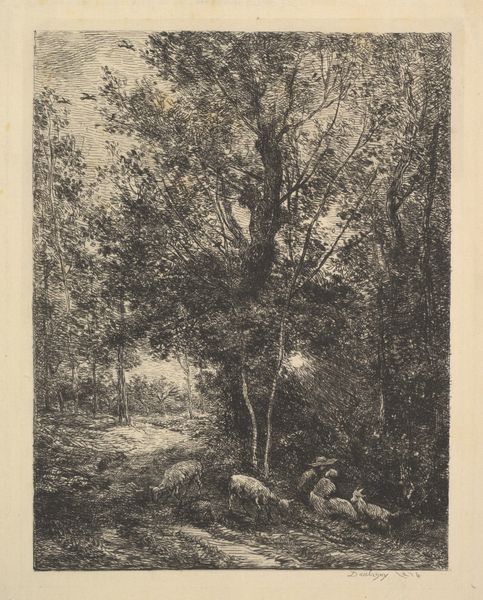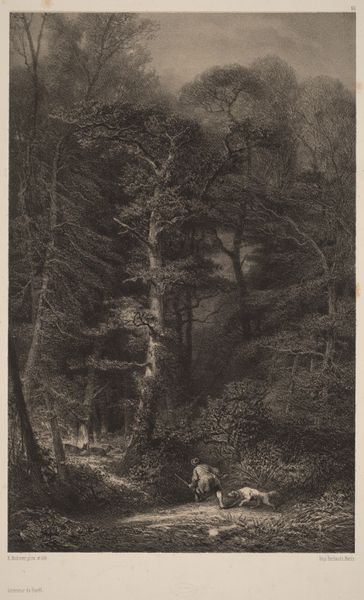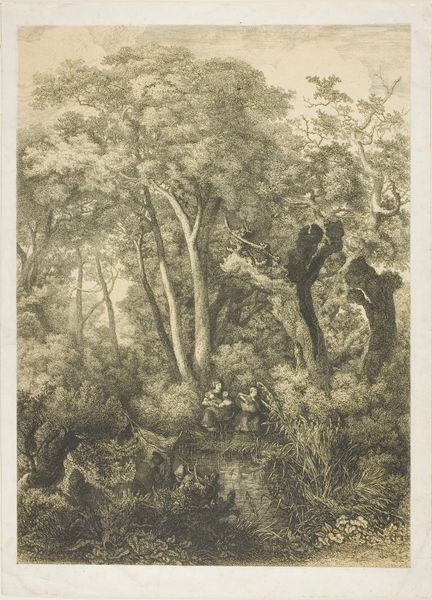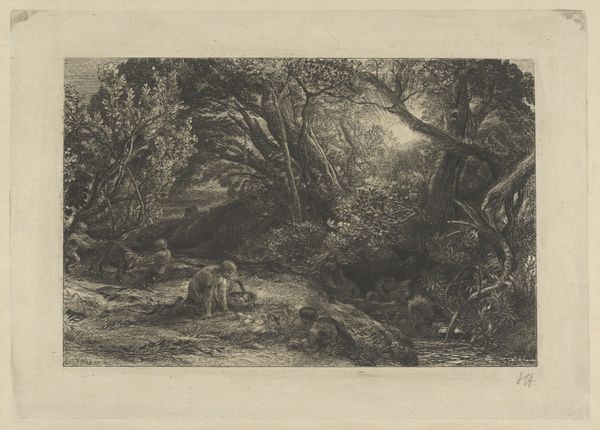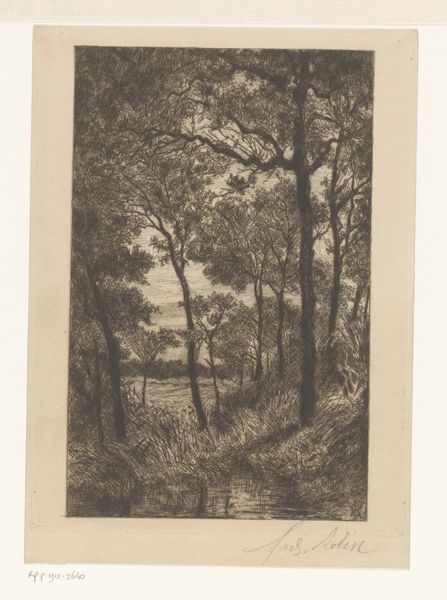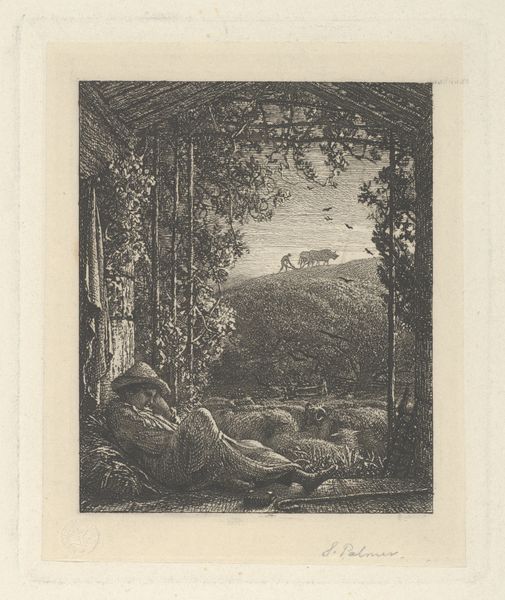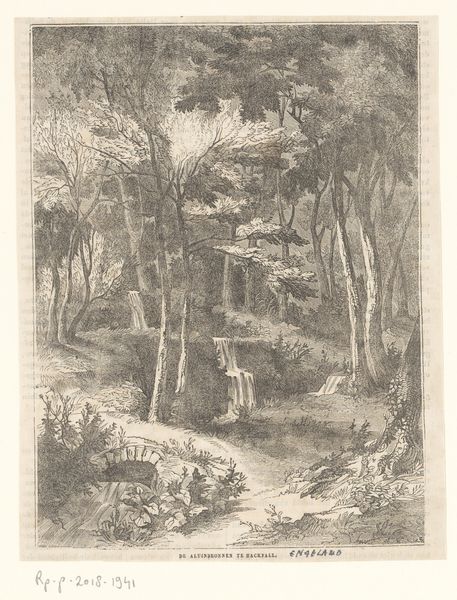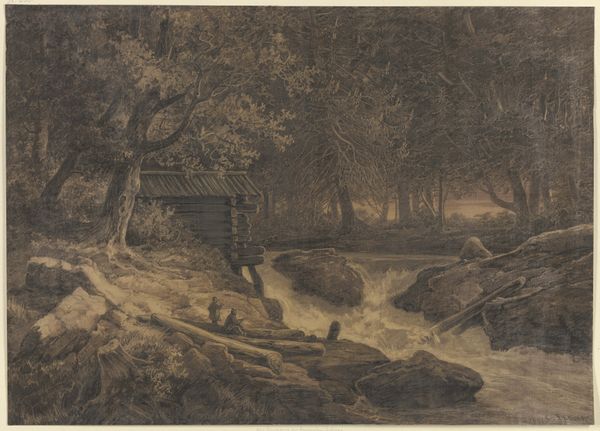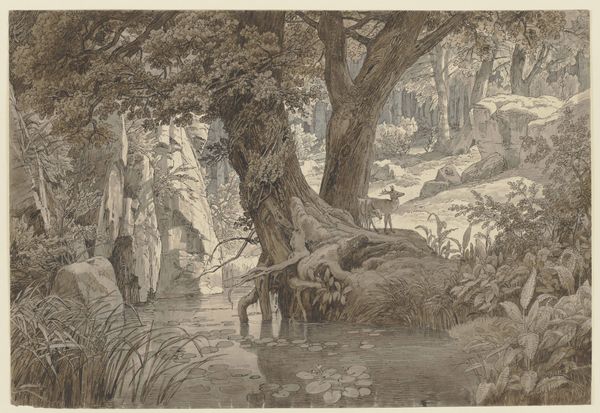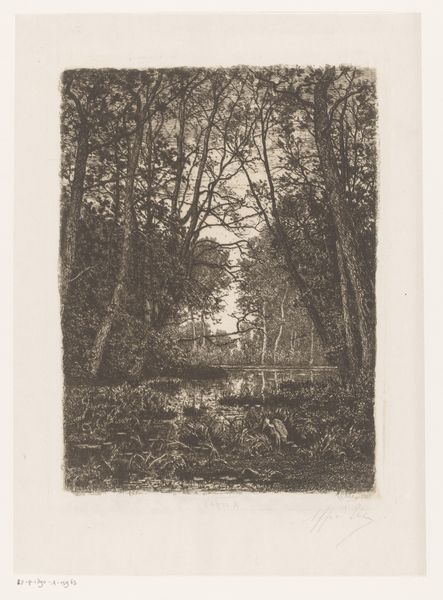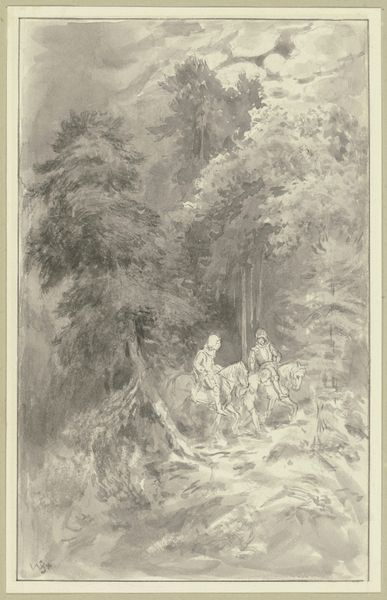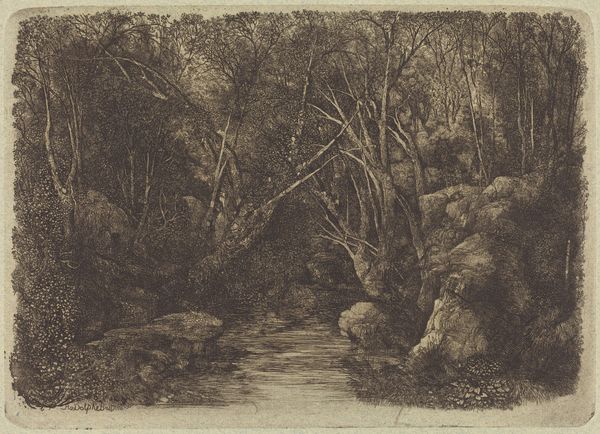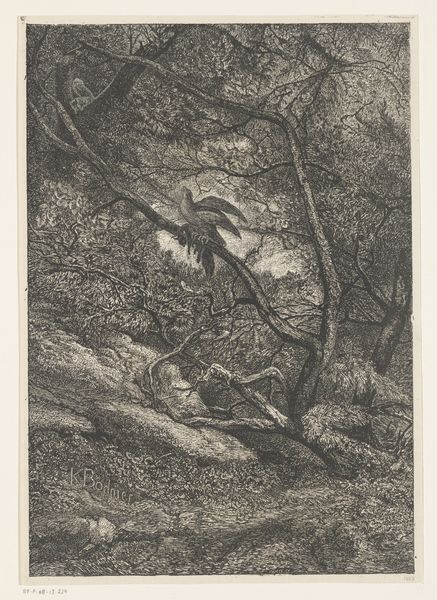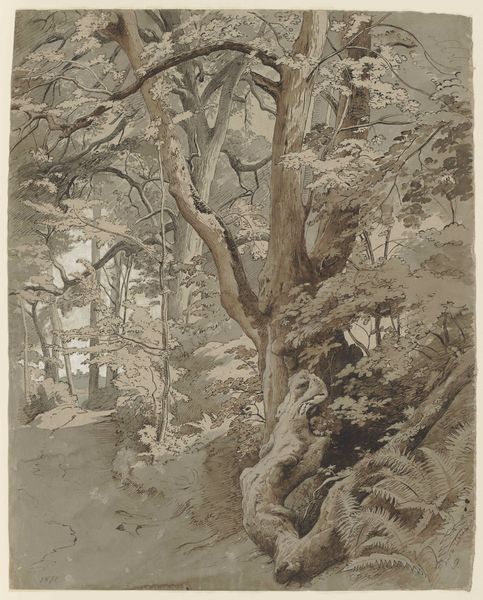
drawing, paper, charcoal
#
drawing
#
landscape
#
charcoal drawing
#
paper
#
form
#
hudson-river-school
#
line
#
charcoal
#
realism
Dimensions: sheet (lunette): 21.2 × 16.3 cm (8 3/8 × 6 7/16 in.)
Copyright: National Gallery of Art: CC0 1.0
Editor: This is William Trost Richards' "Landscape," created in 1862 using charcoal on paper. The meticulous detail gives it a tranquil, almost meditative mood. How do you interpret this work? Curator: It's a stunning example of Hudson River School's aesthetic, but let's consider it beyond just scenic beauty. Think about the social context of 1862. America was in the throes of the Civil War. How might this idealized, untouched landscape function as a form of escapism, a visual balm for a nation torn apart? Editor: That's an interesting point. So, it’s not just a pretty picture, but maybe a kind of… silent protest? Curator: Exactly. The focus on pristine wilderness, devoid of human conflict, implicitly critiques the destructive forces at play. It romanticizes an idea of America that's under threat, perhaps advocating for preservation in a time of unprecedented division and ecological change resulting from wartime needs. What do you notice about the framing? Editor: It’s almost like a window… leading into a very private, untouched world. Curator: Precisely. And whose window is it? Consider the viewers – primarily wealthy, white Americans. This image reinforces ideas of ownership and privilege linked to land, a timely and important perspective considering that indigenous populations were systematically dispossessed during this period and beyond. Is this representation neutral or does it participate in creating an ideological justification? Editor: I never thought of it that way before. I was just focusing on the technique, the details... Curator: And the details *are* important, but inseparable from the bigger picture. It shows how landscape art isn't just about scenery; it reflects cultural anxieties, power structures, and political viewpoints of its time. Editor: Wow, this gives me so much to consider when looking at art in general. It really is more than meets the eye. Curator: Absolutely. Question everything and look beyond the surface!
Comments
No comments
Be the first to comment and join the conversation on the ultimate creative platform.
